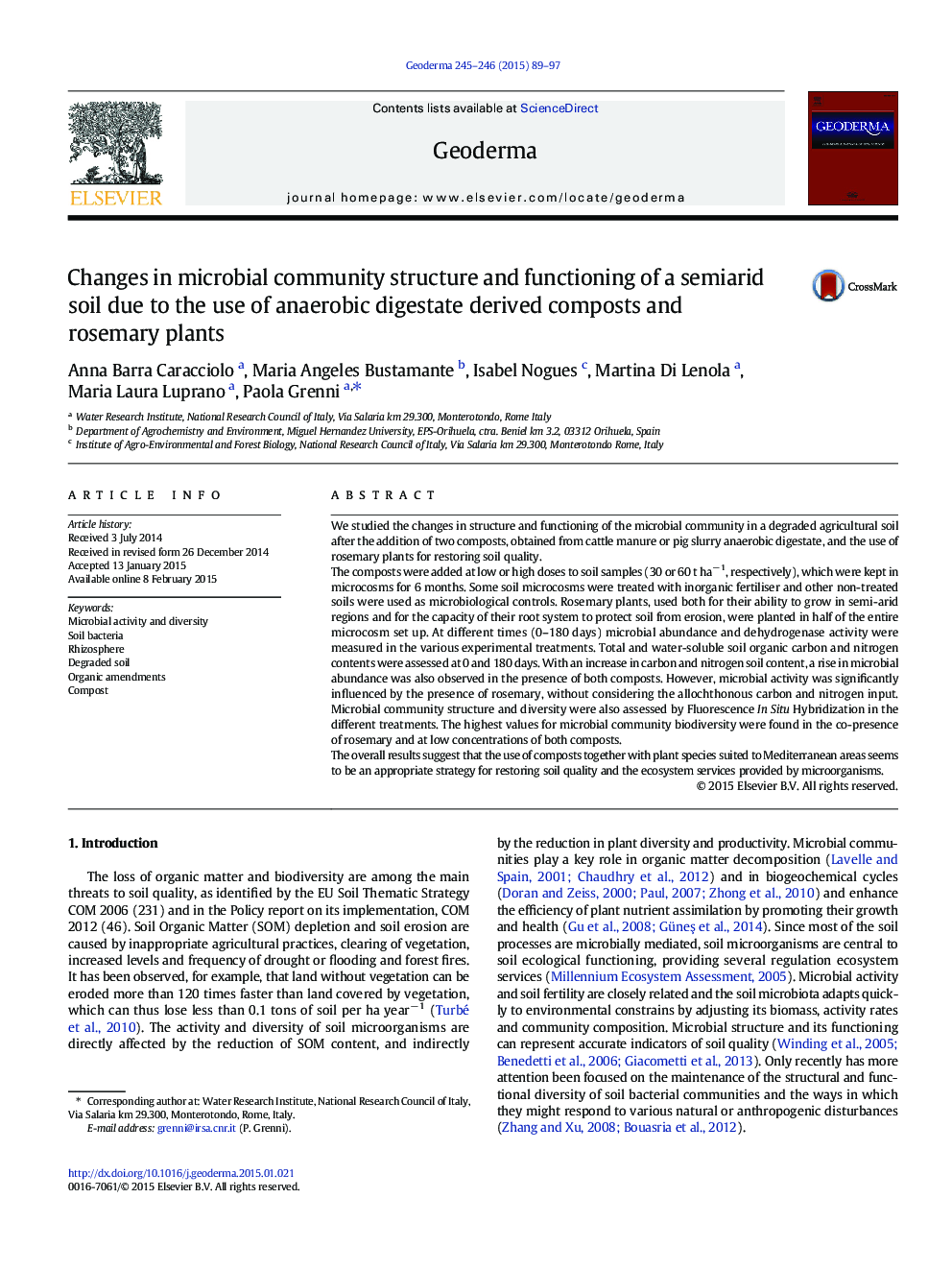| کد مقاله | کد نشریه | سال انتشار | مقاله انگلیسی | نسخه تمام متن |
|---|---|---|---|---|
| 4573192 | 1629463 | 2015 | 9 صفحه PDF | دانلود رایگان |
• Anaerobic digestate based composts were added to a degraded soil for improving its quality.
• Rosemary cuttings were planted for promoting rhizosphere bacterial community.
• Rosemary presence stimulated microbial activity and Proteobacteria growth.
• The concurrent use of compost at 30 t ha− 1 and rosemary increased microbial biodiversity.
We studied the changes in structure and functioning of the microbial community in a degraded agricultural soil after the addition of two composts, obtained from cattle manure or pig slurry anaerobic digestate, and the use of rosemary plants for restoring soil quality.The composts were added at low or high doses to soil samples (30 or 60 t ha− 1, respectively), which were kept in microcosms for 6 months. Some soil microcosms were treated with inorganic fertiliser and other non-treated soils were used as microbiological controls. Rosemary plants, used both for their ability to grow in semi-arid regions and for the capacity of their root system to protect soil from erosion, were planted in half of the entire microcosm set up. At different times (0–180 days) microbial abundance and dehydrogenase activity were measured in the various experimental treatments. Total and water-soluble soil organic carbon and nitrogen contents were assessed at 0 and 180 days. With an increase in carbon and nitrogen soil content, a rise in microbial abundance was also observed in the presence of both composts. However, microbial activity was significantly influenced by the presence of rosemary, without considering the allochthonous carbon and nitrogen input. Microbial community structure and diversity were also assessed by Fluorescence In Situ Hybridization in the different treatments. The highest values for microbial community biodiversity were found in the co-presence of rosemary and at low concentrations of both composts.The overall results suggest that the use of composts together with plant species suited to Mediterranean areas seems to be an appropriate strategy for restoring soil quality and the ecosystem services provided by microorganisms.
Figure optionsDownload as PowerPoint slide
Journal: Geoderma - Volumes 245–246, May 2015, Pages 89–97
